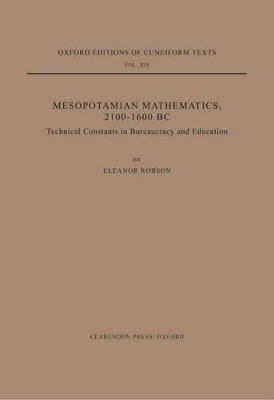Oxford Editions of Cuneiform Texts
1 primary work
XIV
Mathematics was integral to Mesopotamian scribal culture: indeed, writing was invented towards the end of the fourth millennium BC for the express purpose of recording numerical information. By the beginning of the second millennium the earliest known body of 'pure' mathematics was one of the key elements of scribal training, and is thus pivotal to our understanding of the educational practices and intellectual history of ancient Mesopotamia.
The main body of this book is a mathematical and philological discussion of the two hundred technical constants, or `coefficients', found in early second millennium mathematics. Their names and mathematical functions are established, leading to improved interpretations of several large mathematical topics. The origins of many coefficients - and much of the more practical mathematics - are traced to late third millennium accounting and quantity surveying practices. Finally, the coefficients are
used to examine some aspects of mathematics education in early Mesopotamia.
The main body of this book is a mathematical and philological discussion of the two hundred technical constants, or `coefficients', found in early second millennium mathematics. Their names and mathematical functions are established, leading to improved interpretations of several large mathematical topics. The origins of many coefficients - and much of the more practical mathematics - are traced to late third millennium accounting and quantity surveying practices. Finally, the coefficients are
used to examine some aspects of mathematics education in early Mesopotamia.
